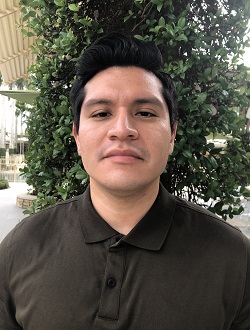In a world that often feels chaotic, overstimulating, and demanding, it’s easy to lose our connection—to ourselves, to others, and to the present moment. For those living with the effects of stress, anxiety, or trauma, that disconnection can feel even more profound. But healing doesn’t always come from big, dramatic moments. Sometimes, it starts in the quiet—kneeling in the dirt, watering a small plant, or watching a single green shoot stretch toward the sun.
Gardening is more than a hobby or a way to beautify a space. It’s a deeply mindful practice, a form of self-care, and a gentle, powerful path to emotional healing. Whether you have a backyard full of vegetables or a few potted herbs on a windowsill, the simple act of nurturing plants can have transformative effects on your mental well-being—especially for those healing from trauma.
Gardening as Mindful Therapy
One of the core benefits of gardening is how naturally it brings us into the present moment. When we focus on the texture of soil, the shape of a leaf, or the scent of fresh herbs, our minds gently shift away from worries, past pain, or future fears. This is mindfulness in action—being grounded in the here and now.
Trauma often disrupts our ability to feel safe in our bodies and in the present. Gardening offers a soothing, low-pressure way to re-engage with the world around us. It doesn’t ask us to perform or produce. It simply asks us to show up, observe, and tend. This kind of mindful attention can regulate the nervous system, calm racing thoughts, and help us feel anchored during difficult moments.
Nature as a Partner in Healing
Being in nature has long been associated with improved mental health, but gardening takes that connection one step further. When we garden, we’re not just in nature—we’re interacting with it, participating in its rhythms, and watching life unfold slowly and beautifully.
For trauma survivors, this can be a powerful form of nonverbal healing. Nature doesn’t rush or judge. It follows its own pace, reminding us that healing, like growth, is a gradual process. Seeds don’t sprout overnight, and neither do we. Watching something come to life under your care—especially after a season of personal struggle—can rekindle a sense of hope, resilience, and renewal.
Reclaiming Self-Care Through Nurture
Trauma often disconnects us from the instinct to care for ourselves. It can create internal narratives of unworthiness or make everyday tasks feel overwhelming. Gardening offers a gentle re-entry point to self-care. When we nurture plants, we practice attentiveness, patience, and consistency. We learn to notice small changes, respond to needs, and make space for growth. These are the very skills that support emotional healing.
And here’s the beautiful part: in caring for something else, we begin to remember how to care for ourselves. Gardening gives us permission to slow down and prioritize our own wellness without pressure. It transforms self-care into something tangible, routine, and rewarding.
Sensory Healing and Nervous System Regulation
The sensory aspect of gardening makes it especially effective for grounding and emotional regulation. The feel of soil between your fingers, the fragrance of lavender or basil, the sound of birds in the trees—all of these sensory inputs activate different parts of the brain and help calm the body.
This is crucial for trauma survivors, whose nervous systems are often on high alert. Gardening provides a safe, embodied experience that brings us back into our senses and out of the hyperaroused or dissociated states that trauma can cause. It becomes a form of somatic healing—healing through the body.
Cultivating Connection and Community
Trauma can leave people feeling isolated and alone. Gardening, while often a solitary activity, can also open doors to connection. Community gardens, local plant swaps, or even simply sharing photos of your plants with a friend can help rebuild social bonds in a gentle, organic way.
Gardening with loved ones—whether a partner, child, or neighbor—also fosters meaningful connection. Working side by side in the soil encourages presence, collaboration, and communication. Even in solitude, gardening reminds us that we are part of something larger. We’re in relationship with the earth, the seasons, the cycle of life itself.
Growth Is Never Linear—And That’s Okay
Just like in healing, things don’t always go according to plan in the garden. Sometimes plants don’t thrive. Sometimes we forget to water them. Sometimes the weather is unkind. But these “failures” are part of the process. They teach us resilience, flexibility, and the power of beginning again.
You don’t need to be a skilled gardener to benefit from the healing power of plants. A single succulent on your desk, a basil plant in your kitchen window, or a tomato vine on your balcony can be enough. The magic lies in the care, the attention, and the intention.
Let your garden mirror your healing. Some days will bloom. Others will feel bare. But beneath the surface, there’s always something growing.
Healing One Small Step at a Time
The journey of healing—especially from trauma—is often long, winding, and deeply personal. But within that journey, there are moments of light, calm, and reconnection. Gardening offers those moments freely. It invites us to pause, to nurture, and to remember that growth is always possible.
So if you’re feeling overwhelmed, disconnected, or in need of a safe space to begin healing, consider stepping into the garden. No matter how big or small, it’s a space where you can breathe, belong, and begin again.
You may be surprised by what starts to grow—inside and out.

![[5.27] BLOG](https://swflcounsel.com/wp-content/uploads/2025/05/5.27-BLOG.jpg)







